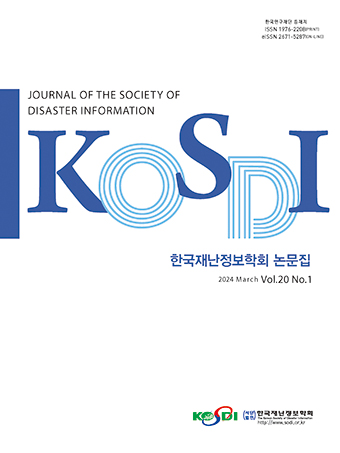Research Article
Abstract
References
Information
Purpose: The purpose of this study is to propose a direction planning integrated waterfront cultural city in terms of urban economic revitalization through regeneration of former industrial harborfront and the creation of cultural living spaces based on regional history in order to pursue urban activities. Method: Analyzing planning waterfront and historical cultural space based on MM21's development policy and strategy under the growth process and development of Yokohama. Results: MM21 is the core public project out of the six major projects promoted by Yokohama, which is on the brink of satellite cities for the expansion of Tokyo with a goal of qualitative transformation of former harbor. It is planned to be developed as a creative cultural waterfront city for an integrated urban development. Conclusion: Planning waterfront cultural city, which takes advantage of the former harbor city derived through MM21 analysis, provides the cityscape towards the sea and the port via the viewing point and opens the waterfront open to the port and the sea Space and Esplanade landscape development, preservation of historic buildings and cultural assets, recycling as cultural art space, waterfront space planning that cooperates with public culture art and pedestrian network.
연구목적: 본 연구에서는 산업항구도시의 재도약을 위한 도시경제기능과 다양한 도시활동을 추구하기 위한 지역역사 기반의 생활문화공간 조성 측면에서 항구도시의 특성을 살린 워터프론트 통합계획방안을 제안하고자 한다. 연구방법: 요코하마의 성장과정과 개발배경을 살펴보고 MM21의 개발정책 및 전략 체계를 기초로 하여 MM21의 워터프론트 및 역사문화공간 계획특성을 분석한다. 연구결과: MM21은 도쿄의 확장으로 위성도시의 위기에 처한 요코하마가 추진한 6대 사업 중 핵심이 되는 공공프로젝트로, 도시자립성 강화, 항만기능의 질적 전환, 수도권의 업무기능 분담을 목표로 하여 항구도시, 창조문화도시, 녹색수변도시, 정보도시 건설을 위해 워터프론트 통합도시개발을 계획하였다. 결론: MM21 분석을 통해 도출된 항구도시의 특성을 살린 워터프론트 문화도시 계획방안은 워터프론트 중심의 토지이용계획과 내륙지역과의 통합계획, 항구도시로 성장한 도시조직을 최대한 보존하고 워터프론트 도시로 전환할 수 있는 구역계획 구축, 조망점을 통해 바다와 항만을 향한 도시경관 제공, 항만과 바다를 향한 워터프론트 오픈스페이스와 에스플라나드 경관조성, 역사적 건축물과 문화자산 보존 및 문화예술공간으로 재활용, 공공문화예술과 보행네트워크를 연계한 워터프론트 공간계획 등이다.
- Basic Agreement on Town Development Under Minato Mirai 21 (2003). Minato Mirai 21 Town Development Council.
- Cho, S.U., Kim, J.-H. (2010). Yokohama Japan, The Incheon Institute.
- Creative City Yokohama Promotion Committee (2010). The Proposal of Creative City Yokohama.
- Guidelines for City Development Reviving the History (1988). Urban Development Bureau of Yokohama City.
- http://www.city.go.kr.
- http://www.minatomirai21.com.
- Kim, N.-Y. (2014). “Waterfront Development and Cultural Policy in Yokohama City, Japan.” Journal of Navigation and Port Research, Vol. 38, No. 3, pp. 291-298. 10.5394/KINPR.2014.38.3.291
- Kim, S.-H. (2018). “A Study on the Use of “Modern Cultural Heritage” in Urban regeneration : Focus on Incheon and Yokohama.”Korean Association of Japanology, Vol. 116, pp. 209-232. 10.15532/kaja.2018.08.116.210
- Kwon, Y.-K. (2011). A Study on City Revitalization through Cultural Coordination, Hankuk University of Foreign Studies.
- Lee, K.-J. (2017). “Integrative Design for Waterfront Community through Environmental and Cultural Networks: Focusing on a Case of Clyde Regeneration in Glasgow.” Urban Design Institute of Korea, Vol. 18, No. 2, pp. 93-110.
- Lee, S.-S., Lee, J.-S. (2017). “Investigating the Applicability of the Area Management for Sustainable Urban Regeneration in Korea Case Studies of Ohsaki and Yokohama Station Areas in Japan.” The Korean Association of Urban Policies, Vol. 8, No. 1, pp. 77-97. 10.21447/jup.2017.8.1.77
- Na, J.-M. (2016). “Policy Implications of Creative-Based Strategies and Culture-Art Creative Urban Policy in Japan : Focusing on Kanazawa and Yokohama.” The Economic Geographical Society of Korea, pp. 642-659. 10.23841/egsk.2016.19.4.642
- Panel Contents of Kanazawa History Exhibition Hall (2009). Kanagawa Prefecture.
- Ra, D.-S., Park, E.S., Oh, M.G., Woo, Y.S. (2008). “The meaning of Creative City and Case Study.” Urban Information Service, No.317, pp. 3-18.
- Report on the Second Basic Plan for Port Redevelopment (2016). Ministry of Oceans and Fisheries.
- Song, D.-H. (2010). “Advanced Case Review of Public Design for the Urban Landscape Formation - Based on Minatomirai21, Yokohama in Japan.” The Association of North-east Asian Cultures, Vol. 25, pp. 403-417. 10.17949/jneac.1.25.201012.022
- The Creative City of Yokohama (2012). City of Yokohama, http://www.city.yokohama.lg.jp.
- The Middle-term Policy of Art and Culture in Yokohama City (2012). City of Yokohama, http://www.city.yokohama.lg.jp.
- Publisher :The Korean Society of Disaster Information
- Publisher(Ko) :한국재난정보학회
- Journal Title :Journal of the Society of Disaster Information
- Journal Title(Ko) :한국재난정보학회논문집
- Volume : 15
- No :2
- Pages :175-185
- DOI :https://doi.org/10.15683/kosdi.2019.06.30.175




 Journal of the Society of Disaster Information
Journal of the Society of Disaster Information







